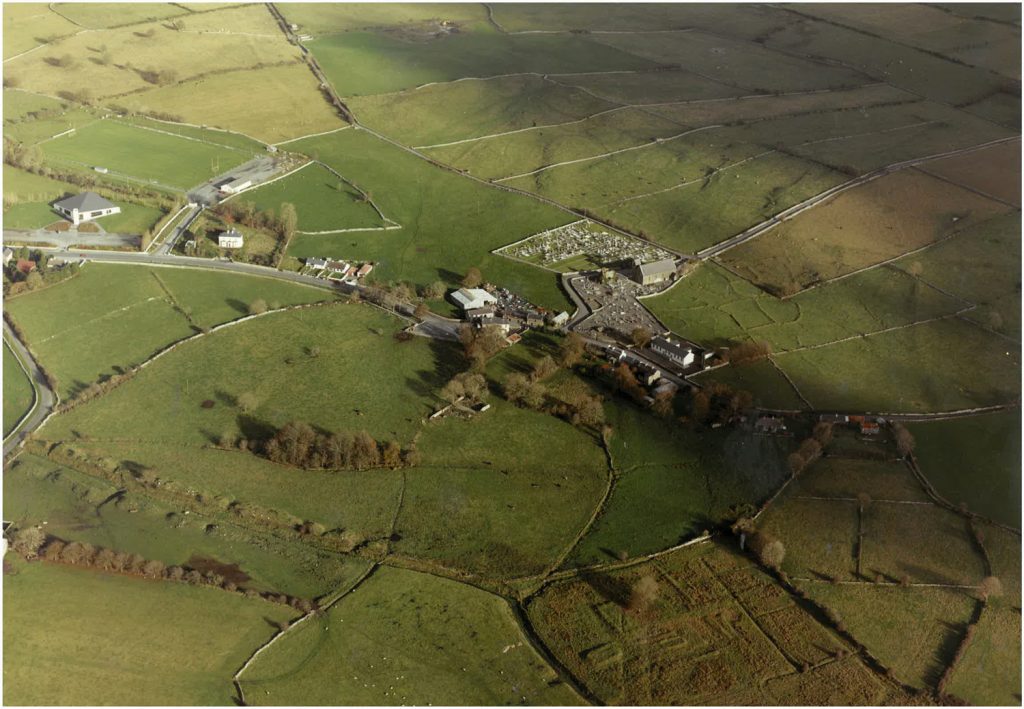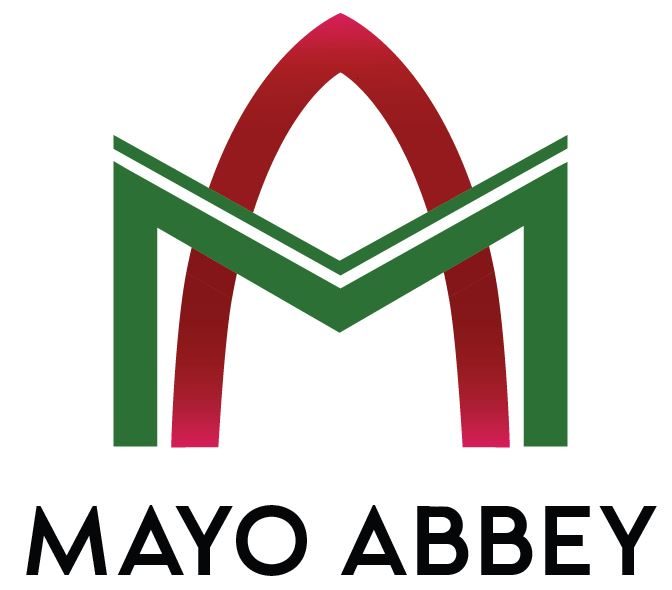
To find out more about the work of the heritage committee and the history of Mayo Abbey please click on the links below.
PAGE MENU
Members of the Heritage Committee
Gallery – Traces of the Past Exhibition 2014
Gallery – Mass in the Old Church 2014
Gallery – Visit by Bishop Tom Williams 2013
GET IN TOUCH
Heritage Committee
Mayo Abbey Heritage Committee was formed in 1993 with the aim of researching, preserving and promoting the Historical and Archaeological Heritage of Mayo Abbey. The Committee is affiliated to Museums of Mayo and the Tochar Valley Network.
Over the years the Committee have been responsible for various initiatives including:
- Securing a F.Á.S. Community Response scheme for 5 years, which researched the history of the area and helped them source funding. This research was published in 1996 and a copy submitted to Trinity College and the National Library of Ireland.
- Reopened transnational links dating back to the seventh century with Iona (Scotland) and Northumbria (England).
- Held two international conferences in 1995-96 which brought together archaeologists and historians from universities in Scotland, England and Ireland.
- Worked with Kilmartin House Museum, Scotland in building a cowhide and hazel-framed Corricle which was sailed to Iona as part of the 1997 ceremonies to commemorate the 1400 Anniversary of the death of Colmcille.
- “Spirit of Mayo Abbey” exhibition and craft workshops were held in 1998 and these were held again in the National School in 1999.
- Organised exhibitions and events as part of “The Gathering 2013” and Mayo Month 2022.
- The Heritage Committee members were closely involved in the building of Bishop O’ Healy Centre. The committee produced the storyboards, which provide an impressive introduction for visitors to the centre.
- Worked with Fr. Austin Fergus to ensure the protection and preservation of St. Colmans Church (known as the Famine Church). The structure has been re-roofed, the stain glass windows repaired and restored, replacing of external doors and floodlighting is now in place. The old gallery was replaced with a new two-floor exhibition area, retaining the original timbers where possible.
- Worked to restore the old School House This was made possible by grants from the National Millennium Committee, Mayo County Council and Social and Economical fund.
- Research of the history of the Mayo Abbey area and the compilation of numerous booklets and flyers on the subject, as well as having produced a video on the history of Mayo Abbey.
- Transferring data from historical records onto more manageable and user friendly date storage forms whilst referencing same
- Held an exhibition of their works and the history of the village.
- Organizing various speakers and heritage events
- Received support in 2023 from the Heritage Council to carry out a LiDAR survey – see below for more information.
Projects have been supported by South West Mayo Leader Co., FAS / DSPCE, County Enterprise Board, Mayo County Council, Dept. of the Environment, National Millennium Committee, Archdiocese of Tuam.
Mayo Abbey LiDAR Survey supported by the Heritage Council
Mayo Parish Heritage Committee is delighted to announce that it has received support from the Heritage Council to carry out a LiDAR survey of the Early Christian Monastic site at Mayo Abbey and surrounding environs under the Community Heritage Grant Scheme 2023.
Mayo Abbey village today gives little indication of it’s proud heritage and it’s importance as a major centre in the Celtic-Anglo Saxon Christian world in the 7th and 8th century. A monastery was founded in Maigh Eó (The Plain of the Yew Trees), c. 670AD for a group of Saxon monks by St. Colman, Bishop of Lindisfarne. The monastery became known as ‘Mayo of the Saxons’. For more than a thousand years it remained the most important centre in the region becoming in turn a diocese, a Norman town and gave it’s name to County Mayo, the third largest county in Ireland.
Mayo Parish Heritage Committee was formed in 1993 with the aim of researching, preserving and promoting the historical and archaeological Heritage of Mayo Abbey. It is a subcommittee of Mayo Abbey Parish Community Council. Over the years the Committee have been responsible for many initiatives including sponsoring a five-year FÁS Community Response scheme, facilitated and supported three departments from NUIG to carry out MA research projects, worked with parish and Diocesan authorities to achieve the protection and preservation of the 1845 St. Colman’s Church (known locally as the Famine Church) and adjacent 19th century School House. It also organised several conferences, put on an exhibition in the refurbished Famine Church for a number of summers and last year hosted an open weekend for the community and local national schools in the Famine Church as part of Mayo County Council’s Home to Mayo Month.
The Heritage Council has agreed to grant €7,000 to ‘An active local community who are well engaged in heritage to fund a LiDAR Survey and public outreach to inform future work and research.’ LiDAR (Light Detection and Ranging) is a remote sensing technique for creating a high resolution, high accuracy topographic model of a landscape. It allows the identification and mapping of extant archaeological earthworks, even when slight or under tree-cover. The 2023 Mayo Abbey LiDAR Survey will map the full extent of the Settlement that once existed in Mayo Abbey (reported to have been in excess of 3,500 people at its height), providing data to be made accessible to the public. On a national level it will help people understand the scale of early medieval monastic towns, in particular those associated with St. Colman who is closely associated with the Columban Church and Colmcille, one of the patron saints of Ireland.
Results of the project will inform the development of a community-driven heritage plan for the monastic site and its environs. In addition Mayo Parish Heritage Committee will hold two information evenings in the village to enable the local community and general public gain knowledge of past and upcoming research and results and findings of the survey. The first will be held towards the end of June and the second event will be held in the Famine Church during National Heritage Week 2023 (August 12th – 20th). The theme for this year’s National Heritage Week is ‘Living Heritage’ and Mayo Parish Heritage Committee plan to present many aspects of Mayo Abbey’s heritage together with the results and findings of the 2023 LiDAR survey. The survey and the two information evenings will be filmed and published online together with a final report of the survey. Further information from heritage@mayoabbey.ie
Mayo Parish Heritage Committee gratefully acknowledges the support of the Heritage Council under the Community Heritage Grant Scheme 2023.


You can now play your part, in helping us map the Settlement that once existed in Mayo Abbey.
Heritage Committee Members
The present members are Eddie Barrett, Mary Jo. Barrett, Joe Brett, Tom Delaney, Jimmy Finn, Martin Flatley, Elizabeth Nestor and Paddy Gibbons.
Previous members included Fr. Austin Fergus P.P., Ger Maguire, Peter Mannion, Geraldine Joyce, Mattie Ruane, R.I.P., Joseph Ruane, Shane Adams, T.J. Wilson, Martin Dunne, Michael Hambly, Clem McLoughlin, Isadore Joyce, Kevin Barton, Cyril Reid, Florrie Griffin and Sarah Mannion.
History of Mayo Abbey
Known throughout the Christian world as ‘Mayo of the Saxons’. Mayo Abbey was already 300 years old when Viking Dublin was founded. Founded by St. Colman of Lindesfarne in c670.
The written heritage of Mayo Abbey begins in 731 when it is mentioned in writing in the “Ecclesiastical History of the English people” by the Venerable Bede of Jarrow.
Alcuin, of York, chief advisor to the Roman Emperor Charlemagne wrote at least two letters of support and praise to Mayo of the Saxons (c780)
Annals of Ulster state that Bishop Aldwulf of Mayo was 6th in seniority at a church council in York in AD 786.
In AD. 1176, Donnell O’Conor, son of Turlough O’Conor, and brother of Rory O’Conor, last High king of Ireland was buried here.
Mayo of the Saxons continued to be in contact with Europe throughout the middle ages. During the 1430’s the bishopric of Mayo is again mentioned in papal records.

Mayo Abbey was under the direct control of the Papacy, not subject to the local secular political rulers.
In 1370 the abbey ‘St Michael, Mayo’ became an Augustinian Abbey. Confirmed by Pope John XXIII in 1411.
Seat of the Diocese of Mayo 1152 to 1631.
As far as we know there were 14 bishops of Mayo. Best known is Patrick O’Healy, first bishop to be executed for the faith in Ireland.
The Vatican archives describe Mayo diocese as ”’the bishopric of Mayo, where there was once a famous university which had seven colleges, two abbeys and other churches besides its cathedral”’.
In the 1578 the village gave its name to the county of Mayo.
As the name implies, St. Colman’s Church was built in the 1840’s and officially opened in 1845. It remained the parish church until 1978, when a new church was officially opened in the village.
The Famine Church is located in the centre of the village and stands on the ruins of a line of churches and monasteries stretching back to the 7th century.
History of Mayo Abbey – Video
Gallery – Traces of our Past Exhibition 2014










Gallery – Mass in the Old Church 2014






Gallery – Visit by Bishop Tom Williams 2013






